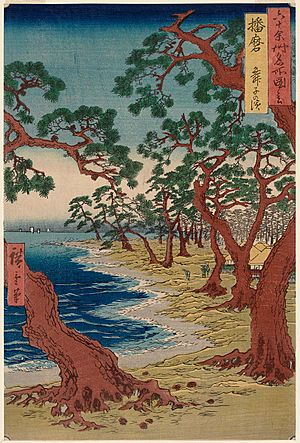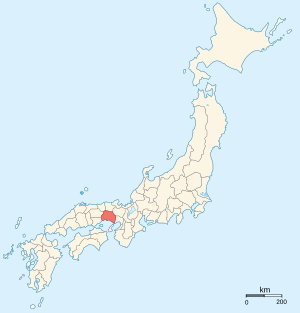Harima Province facts for kids
Harima Province (播磨国, Harima no kuni), also known as Banshu (播州), was an important old province of Japan. It was located in the area that is now part of Hyōgo Prefecture on the island of Honshū. Harima Province was known for its rich history and strategic location.
Harima shared its borders with several other provinces. These included Tajima, Tamba, Settsu, Bizen, and Mimasaka. Its central location made it a key area for trade and travel in ancient Japan.
The main city and capital of Harima Province was Himeji. This city was built along the Ishikawa River and became a very important center for the province. Today, Himeji is famous for its beautiful castle.
History of Harima Province

Harima Province existed for many centuries as a distinct region of Japan. It played a role in the country's early development and was home to various powerful families. These families often controlled the land and its resources.
During the Meiji period (1868-1912), Japan went through many big changes. One of these changes was the end of the old province system. In the 1870s, the provinces were replaced by a new system of prefectures. This meant that Harima Province became part of the larger Hyōgo Prefecture that we know today. The maps of Japan were updated to show these new administrative areas.
Important Temples and Shrines
Religious sites were very important in every Japanese province. They served as places of worship and community gathering.
Iwa jinja was the most important Shinto shrine in Harima Province. It was known as the ichinomiya, which means it was the chief or first shrine of the province. People would visit this shrine to pray and take part in traditional ceremonies.
Related places in Japan
See also
 In Spanish: Provincia de Harima para niños
In Spanish: Provincia de Harima para niños


